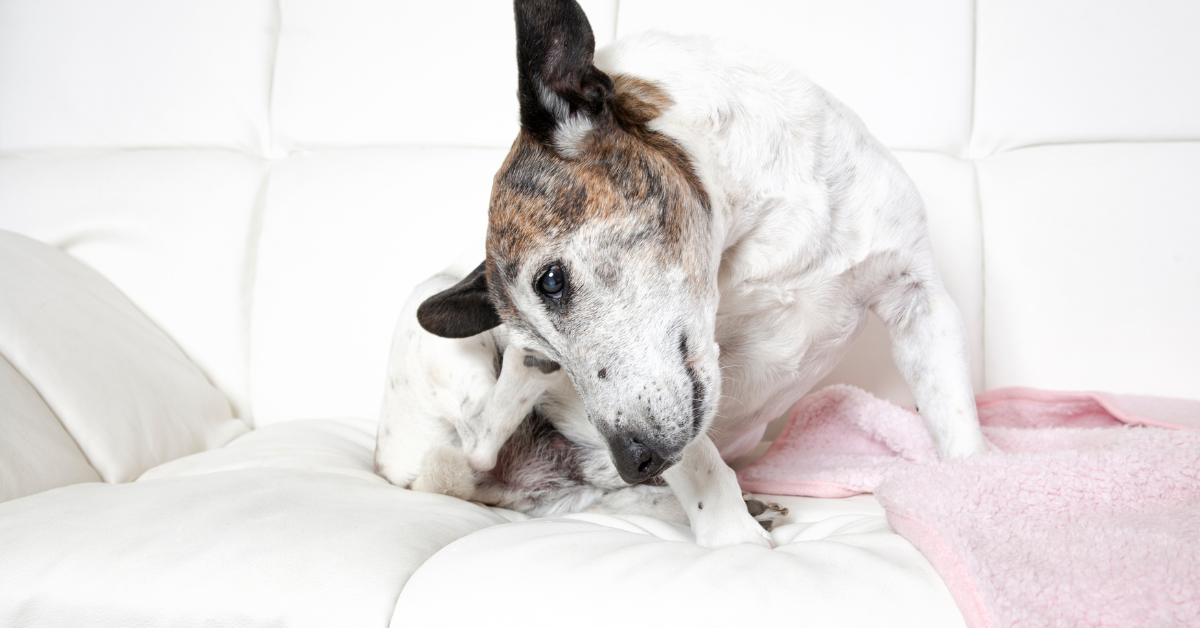We’ve all seen it: the incessant scratching, the endless itch. But what is your furry friend really trying to communicate through this behavior? It turns out, scratching isn’t just about relieving an itch; it’s a form of canine communication. Understanding why dogs scratch is key to keeping them healthy and happy. Let’s delve into the world of scratching and shed some light on what your dog might be trying to tell you.
The Itch Factor:
First things first, let’s tackle the itch. Just like humans, dogs scratch to alleviate discomfort caused by various factors. Fleas, allergies, dry skin, or skin irritations are common culprits behind the urge to scratch. Regular grooming and proper flea control can help minimize itching and keep your pup comfortable.

Image Credit: YellowSarah from Getty Images
Communication Through Scratching:
Beyond simply relieving discomfort, scratching can be a way for dogs to communicate with us. Dogs are masters of body language, and scratching is just one of the many ways they express themselves. If your dog suddenly starts scratching excessively or in a particular spot, it could be a sign of an underlying issue that requires attention.
Health Concerns:
While occasional scratching is normal, persistent or intense scratching may indicate a health problem. Skin infections, allergies, parasites, or even anxiety can manifest through excessive scratching. If you notice your dog scratching excessively, it’s essential to consult your veterinarian to rule out any potential health issues and provide appropriate treatment.
Environmental Factors:
Environmental factors can also play a significant role in your dog’s scratching behavior. Changes in weather, exposure to allergens, or even stressors in their surroundings can trigger scratching. Pay attention to any changes in your dog’s environment and behavior to identify potential triggers for excessive scratching.
Grooming and Hygiene:
Proper grooming is crucial for maintaining your dog’s skin health and reducing the urge to scratch. Regular brushing helps remove loose fur and prevents matting, while bathing with a gentle shampoo can help alleviate dry skin. Additionally, keeping your dog’s bedding clean and ensuring they have access to fresh water can contribute to overall skin health.

Image Credit:Natee127 from Getty Images
Addressing the Root Cause:
To effectively address your dog’s scratching behavior, it’s essential to identify and address the root cause. Whether it’s fleas, allergies, or a skin condition, targeted treatment is key to providing relief. Work closely with your veterinarian to develop a treatment plan tailored to your dog’s specific needs.
Preventive Measures:
In addition to treating underlying issues, taking preventive measures can help minimize scratching in the long run. Regular flea control, maintaining a balanced diet, and providing a comfortable living environment are essential aspects of preventive care. By addressing potential triggers and promoting overall well-being, you can help keep your dog itch-free and happy.
Scratching is more than just a reflex; it’s a form of communication and a window into your dog’s well-being. By understanding why dogs scratch and paying attention to their behavior, we can better address their needs and ensure their health and happiness. So the next time you see your furry friend scratching, remember to listen to what they’re trying to tell you.


